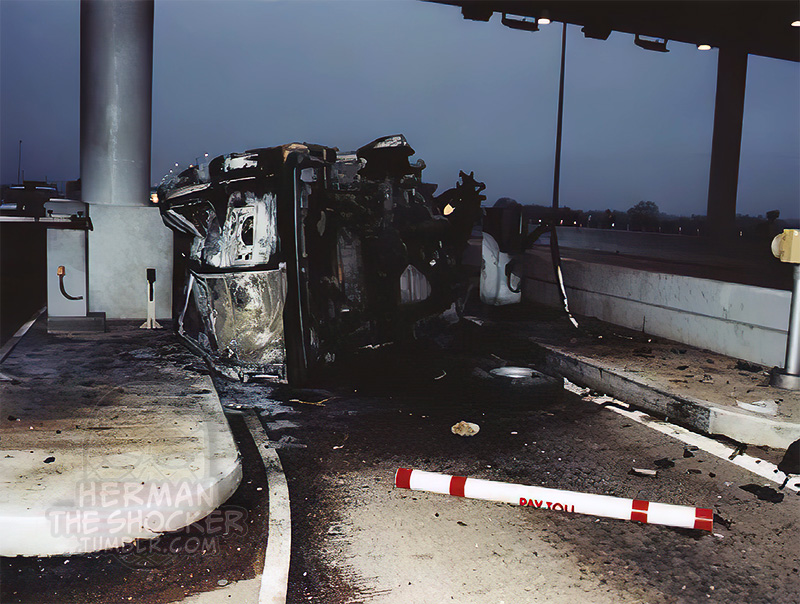The driver of a van was approaching a toll booth at a high rate of speed in dense fog. A sharp leftward evasive maneuver was unsuccessful in avoiding impact with the concrete canopy support. The impact point on the vehicle was the right side—the same side of the vehicle as the fuel tank and exhaust system. The fuel tank was ruptured. The vehicle flipped onto its left side, spun around counterclockwise into the adjacent lane, and burst into flames (Fig.1 is a view from the rear of the vehicle). The body of the driver was charred from the fire (Fig.2). Severe charring made determination of injuries difficult. Soot in the distal airways (Fig.3) was correlated with a carboxyhemoglobin concentration of 25 percent. I don’t have info on what exactly caused the accident.
Although automobile manufacturers attempt to minimize risks of vehicular conflagration (large and destructive fire), the very nature of motor vehicles makes them prone to fires: a combustion engine, with heated parts, mounted on a rapidly moving vessel, along with a tank of fuel. In crashes involving fire the body is frequently not extracted until burning is advanced.
In cases of vehicular conflagration the tasks of the pathologist are to identify the decedent, to evaluate for the presence of blunt trauma, the severity of the blunt trauma injuries, and to evaluate for evidence of smoke inhalation or other indicators that the person was alive and/or conscious during the fire. These questions frequently become pivotal in subsequent civil litigation.
Latest posts









